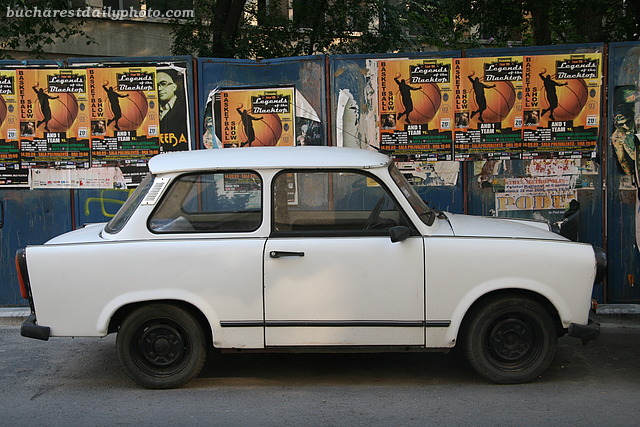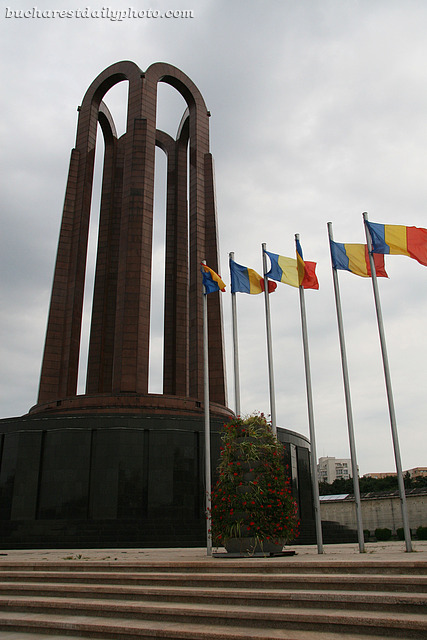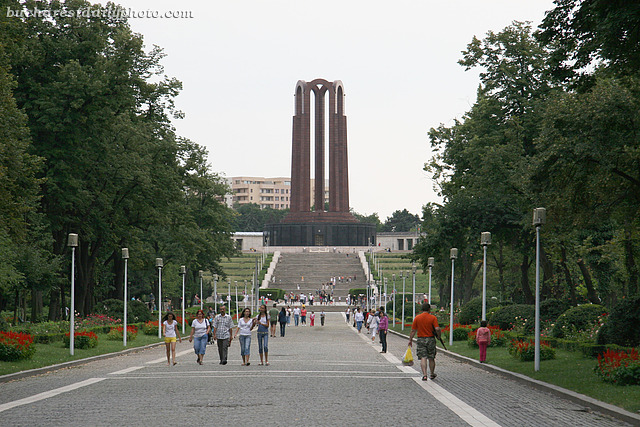… double the value of a Trabant?
A: Fill up the tank!
Q. How many workers does it take to build a Trabi?
A. Two, one to fold and one to paste.
Q. Why do some Trabants have heated rear windows?
A. To keep your hands warm when pushing.
The Trabant… this wonderful piece of East German engineering 🙂 The east’s answer to Volkswagen, the butt of all jokes, the most common vehicle in East Germany, exported largely to countries inside the communist block. I used to see many of them in Bucharest back in the 80s but now weeks can pass before I see one. They are in fact slowly disappearing. My guess is that the only people that still drive a Trabant in Bucharest are the fans, the enthusiasts, the nostalgic, the ones that want to look different. With the new anti-pollution laws concerning cars, I’m guessing it must cost a lot to keep one registered. I could say that at least in Romania they have already become collector’s items. I always thought they looked cute and I’m sorry that I never had the chance to drive or ride in a Trabant. But it looks like the Trabant is being revamped in the form of a new all-electric, eco-friendly wonder according to this article.









